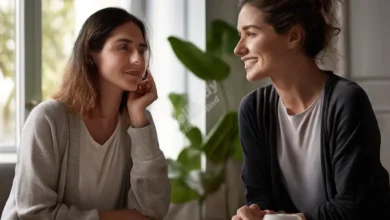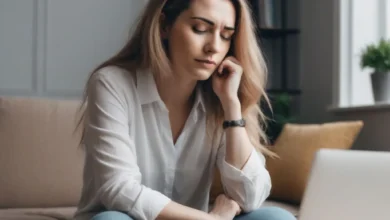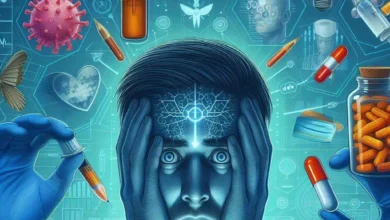Art Therapy for Anxiety & Depression: A Powerful Resource

Introduction
Imagine a world where the stroke of a brush or the molding of clay could ease the weight of anxiety and lift the veil of depression. This isn’t a far-fetched dream, but a reality that’s been quietly transforming lives through art therapy.
In a time when anxiety and depression rates are soaring – with an estimated 280 million people worldwide suffering from depression alone – it’s crucial to explore every avenue of treatment. Art therapy, a powerful yet often overlooked resource, might just be the colorful key to unlocking mental wellness for many.
But what exactly is art therapy, and how can it help those grappling with anxiety and depression?
In this post, we’ll dive into the vibrant world of art therapy, exploring its:
- Benefits
- Techniques
- Potential as an underutilized gem in mental health treatment
Join us as we uncover how this creative approach could be the solution you’ve been searching for in your journey towards better mental health.
What is Art Therapy?

Art therapy is a unique form of psychotherapy that harnesses the power of creative expression to improve mental health and well-being. Unlike traditional art classes, art therapy isn’t about creating masterpieces or learning techniques. Instead, it’s a therapeutic process that uses art as a medium for healing and self-discovery.
Definition and brief history:
Art therapy emerged as a distinct profession in the 1940s, pioneered by artists and educators who recognized the healing potential of creative expression. The American Art Therapy Association defines it as an integrative mental health and human services profession that enriches the lives of individuals, families, and communities through active art-making, creative process, applied psychological theory, and human experience within a psychotherapeutic relationship.
How it differs from traditional art classes:
- Focus on process, not product: In art therapy, the emphasis is on the act of creating, not the final artwork.
- Guided by a therapist: Sessions are led by trained professionals who help interpret and process the emotions and thoughts expressed through art.
- Therapeutic goals: The aim is to address specific mental health concerns, not to improve artistic skills.
Types of art therapy:
Art therapy can involve various creative activities, including:
- Painting: Using colors and brushstrokes to express emotions
- Sculpting: Molding clay or other materials to give form to feelings
- Collage-making: Combining different elements to represent thoughts or experiences
- Drawing: Sketching or doodling to externalize internal states
- Digital art: Using technology for creative expression
Each of these methods offers unique benefits and can be tailored to individual needs and preferences.
The Science Behind Art Therapy

Art therapy isn’t just about creating pretty pictures; it’s a scientifically-backed approach to mental health. Let’s explore how art affects the brain and the neurological benefits it offers.
How art affects the brain:
Creating art engages multiple areas of the brain simultaneously, including:
- The visual cortex, processing what we see
- The prefrontal cortex, involved in decision-making and emotional regulation
- The motor cortex, controlling our movements
- The limbic system, our emotional center
This multi-faceted engagement can lead to powerful therapeutic effects.
Neurological benefits of creating art:
- Stress reduction: Art-making lowers cortisol levels, the body’s stress hormone.
- Improved neural connections: Creative activities strengthen and create new neural pathways.
- Increased dopamine: The brain’s reward center is activated, boosting mood and motivation.
- Enhanced cognitive flexibility: Artistic problem-solving improves adaptability and resilience.
Studies supporting art therapy’s effectiveness:
- A 2016 study in the Journal of the American Art Therapy Association found that just 45 minutes of art-making significantly reduced cortisol levels in participants, regardless of artistic experience.
- Research published in PLOS One in 2018 showed that art therapy interventions resulted in significant improvements in depression, anxiety, and stress symptoms compared to control groups.
- A 2019 review in Frontiers in Psychology concluded that art therapy is effective in treating a range of mental health conditions, including anxiety, depression, and PTSD.
These studies highlight the growing scientific evidence supporting art therapy as a valuable tool in mental health treatment.
Art Therapy for Anxiety

Art therapy can be a powerful tool for managing anxiety symptoms, offering a creative outlet for expressing and processing fears and worries. Let’s explore how it helps and some specific techniques used.
How art therapy can help manage anxiety symptoms:
- Provides a safe space for expressing difficult emotions
- Shifts focus away from anxious thoughts
- Promotes mindfulness and present-moment awareness
- Offers a sense of control through the creative process
- Reduces physical symptoms of anxiety through relaxation
Specific techniques used in art therapy for anxiety:
- Mandala drawing: Creating circular designs can promote relaxation and reduce anxiety.
- Color breathing: Associating colors with breath to calm the nervous system.
- Worry sculptures: Molding clay to give shape to anxieties, then transforming them.
- Visual journaling: Combining images and words to express and process anxious thoughts.
Case study: Art therapy success with anxiety
Sarah, a 28-year-old with generalized anxiety disorder, struggled with constant worry and restlessness. Traditional talk therapy had limited success. After eight weeks of art therapy sessions:
- She reported a 40% reduction in anxiety symptoms
- Her sleep quality improved significantly
- She developed new coping strategies using art at home
- Her overall quality of life increased
Sarah’s case illustrates how art therapy can be an effective complement to traditional anxiety treatments, offering a unique pathway to healing and self-discovery.
Art Therapy for Depression

Art therapy offers a unique and effective approach to treating depression, providing a creative outlet for expressing emotions and boosting mood. Let’s explore its benefits and specific techniques used.
Benefits of art therapy for depression:
- Increases self-awareness and emotional expression
- Boosts self-esteem through the act of creation
- Provides a sense of accomplishment
- Improves mood through engagement in pleasurable activities
- Offers a non-verbal outlet for processing difficult emotions
Techniques specifically used for depression:
- Color therapy: Using vibrant colors to stimulate positive emotions and energy.
- Self-portrait creation: Exploring self-image and identity through various artistic mediums.
- Gratitude collages: Creating visual representations of positive aspects of life.
- Future visioning: Artistically depicting hopes and goals for the future.
How art therapy can complement traditional depression treatments:
Art therapy can work alongside other treatments like medication and talk therapy to:
- Enhance overall treatment effectiveness
- Provide additional coping strategies
- Address aspects of depression that may be difficult to verbalize
- Increase motivation for continued treatment
For example, a patient taking antidepressants might use art therapy to explore and express their changing emotional landscape, providing valuable insights for their psychiatrist and therapist.
By combining the expressive power of art with the structure of therapy, art therapy offers a holistic approach to treating depression that can lead to more comprehensive and lasting improvements.
Advantages of Art Therapy

Art therapy offers several unique benefits that set it apart from traditional therapeutic approaches. Let’s explore these advantages:
1. Non-verbal expression of emotions
- Bypasses language barriers: Ideal for those who struggle to verbalize feelings
- Accesses deeper emotions: Taps into subconscious thoughts and feelings
- Reduces defensiveness: Allows for indirect expression of difficult emotions
2. Stress reduction and relaxation
- Promotes mindfulness: Focuses attention on the present moment
- Induces ‘flow’ state: Engages individuals in absorbing, enjoyable activities
- Lowers cortisol levels: Reduces physical symptoms of stress
3. Improved self-esteem and self-awareness
- Builds confidence: Through mastery of new skills and self-expression
- Enhances self-understanding: Provides insights into thoughts and behaviors
- Promotes self-acceptance: Encourages non-judgmental exploration of self
4. Social benefits in group art therapy settings
- Reduces isolation: Connects individuals with similar experiences
- Improves social skills: Encourages interaction and sharing
- Builds support networks: Creates a sense of community
5. Flexibility and adaptability
- Suits various ages and abilities: Can be tailored to individual needs
- Applicable to many conditions: Effective for various mental health issues
- Integrates with other therapies: Complements traditional treatment approaches
6. Tangible results
- Creates lasting reminders: Artwork serves as a visual record of progress
- Provides sense of achievement: Completing artworks boosts motivation
- Allows for reflection: Revisiting past works can show growth over time
These advantages make art therapy a powerful tool in the mental health toolkit, offering unique benefits that can enhance overall well-being and complement other forms of treatment.
Potential Limitations and Considerations

While art therapy offers many benefits, it’s important to consider its limitations and potential challenges:
1. Not a standalone treatment for severe cases
- Complementary approach: Best used in conjunction with other therapies for severe mental health conditions
- May require additional support: Medication or intensive therapy might be necessary for some individuals
2. Importance of working with a qualified art therapist
- Specialized training required: Art therapists need specific education and certification
- Ethical considerations: Proper training ensures safe and effective treatment
- Misinterpretation risk: Untrained individuals may misinterpret artwork or emotional responses
3. Possible initial discomfort for those who don’t consider themselves “artistic”
- Fear of judgment: Some may feel self-conscious about their artistic abilities
- Performance anxiety: Worry about creating “good” art can hinder the therapeutic process
- Overcoming misconceptions: Understanding that art therapy isn’t about artistic skill, but self-expression
4. Availability and accessibility
- Limited availability: Not as widely available as traditional therapy in some areas
- Cost considerations: May not be covered by all insurance plans
- Time commitment: Regular sessions may be necessary for optimal results
5. Cultural considerations
- Cultural sensitivity: Art forms and interpretations may vary across cultures
- Language barriers: While non-verbal, some instruction or discussion may be needed
6. Physical limitations
- Adaptations needed: Some techniques may require modification for individuals with physical disabilities
- Material sensitivities: Certain art materials may cause allergic reactions in some people
7. Emotional intensity
- Overwhelming emotions: The creative process may uncover intense feelings
- Need for proper support: Therapists must be prepared to handle emotional responses
Understanding these limitations helps set realistic expectations and ensures that individuals can make informed decisions about incorporating art therapy into their mental health treatment plan.
How to Get Started with Art Therapy

Taking the first step towards art therapy can be both exciting and daunting. Here’s a guide to help you begin your journey:
Finding a qualified art therapist:
- Check credentials: Look for therapists registered with professional bodies like the American Art Therapy Association
- Ask for recommendations: Consult your doctor or mental health professional
- Online directories: Use resources like Psychology Today’s therapist finder
Resources for finding art therapists:
- American Art Therapy Association: arttherapy.org
- International Art Therapy Organization: internationalarttherapy.org
- Local mental health clinics or hospitals
What to expect in your first session:
- Initial assessment: Discussion of your goals and medical history
- Introduction to materials: Familiarization with various art supplies
- Simple art activity: A low-pressure creative exercise
- Discussion: Reflection on the process and your artwork
- Planning: Outline of future sessions and treatment goals
DIY art therapy activities to try at home:
- Emotion color wheel:
- Draw a circle and divide it into sections
- Assign colors to different emotions
- Color in sections based on your current feelings
2. Stress sculpture:
- Use clay or playdough to create a shape representing your stress
- Mold and reshape it as you visualize stress leaving your body
3. Gratitude jar:
- Decorate a jar
- Write or draw things you’re grateful for on small pieces of paper
- Fill the jar over time and review when you need a mood boost
4. Visual journaling:
- Combine drawings, paintings, and words in a journal
- Express your daily thoughts and feelings through art
Remember, these DIY activities are not substitutes for professional therapy but can be helpful supplementary practices.
Starting art therapy is a personal journey. Be patient with yourself and remember that the process, not the final product, is what matters most.
Art Therapy vs. Traditional Therapy: A Comparison

To better understand the unique aspects of art therapy, let’s compare it with traditional talk therapy:
| Aspect | Art Therapy | Traditional Talk Therapy |
|---|---|---|
| Primary Mode of Expression | Visual and creative | Verbal |
| Focus | Process of creation and self-expression | Discussion and analysis |
| Approach to Emotions | Often indirect, through symbolism and metaphor | Direct verbal expression |
| Cognitive Engagement | Both right (creative) and left (analytical) brain | Primarily left brain |
| Tangible Output | Artwork created during sessions | Usually no physical product |
| Nonverbal Communication | Heavily emphasized | Limited |
| Skill Development | Artistic and emotional skills | Verbal and analytical skills |
| Mindfulness Aspect | Often inherent in the creative process | May be taught as a separate technique |
| Homework | May include art projects | Often involves journaling or behavioral exercises |
| Session Structure | Typically includes creation time and discussion | Primarily conversation-based |
| Therapist’s Role | Guide in both creative process and emotional exploration | Listener, analyst, and guide in verbal exploration |
| Client’s Active Participation | High, through art-making | Varies, but generally through verbal interaction |
| Suitability for Non-Verbal Individuals | Highly suitable | May be challenging |
Key Takeaways:
- Both forms of therapy are valuable and effective
- Art therapy offers a unique, nonverbal approach to emotional expression
- Traditional therapy provides in-depth verbal analysis
- The choice between the two (or a combination) depends on individual needs and preferences
This comparison highlights how art therapy can offer a complementary or alternative approach to traditional talk therapy, potentially reaching aspects of the psyche in different ways.
Is Art Therapy Underutilized?

Despite its proven benefits, art therapy remains a relatively underutilized resource in mental health treatment. Let’s explore why this might be the case and what the future holds for this therapeutic approach.
Current state of art therapy in mental health treatment:
- Growing recognition: Increasing acceptance in medical and psychological communities
- Limited integration: Not yet fully incorporated into mainstream treatment plans
- Specialized application: Often used in specific settings (e.g., trauma recovery, pediatrics)
Reasons for potential underutilization:
- Lack of awareness:
- Many people are unfamiliar with art therapy as a treatment option
- Some healthcare providers may not fully understand its benefits
2. Misconceptions:
- Belief that art therapy is only for children or “artistic” people
- Perception that it’s less effective than traditional therapies
3. Limited availability:
- Fewer trained art therapists compared to traditional therapists
- Not widely offered in all healthcare settings
4. Insurance coverage:
- Some insurance plans may not cover art therapy sessions
- Can be seen as an “alternative” treatment
5. Research gaps:
- While growing, research on art therapy is less extensive than for some other therapies
- Need for more large-scale, controlled studies
The future of art therapy in mental health care:
- Increasing integration: More healthcare systems are beginning to incorporate art therapy
- Expanded research: Growing body of evidence supporting its effectiveness
- Technological advancements: Digital art therapy options becoming more prevalent
- Broader applications: Expanding use in various settings (e.g., corporate wellness programs)
- Enhanced training: Improved education and certification processes for art therapists
As awareness grows and more research emerges, art therapy has the potential to become a more mainstream and widely utilized treatment option. Its unique ability to address mental health issues through creative expression positions it as a valuable complement to traditional therapies.
The future looks bright for art therapy, with increasing recognition of its benefits potentially leading to wider adoption and accessibility in the coming years.
Conclusion

As we’ve explored throughout this post, art therapy stands as a powerful yet often underutilized resource in the treatment of anxiety and depression. This creative approach to mental health offers unique benefits that complement and enhance traditional therapeutic methods.
Let’s recap the key benefits of art therapy for anxiety and depression:
- Non-verbal expression of complex emotions
- Stress reduction and promotion of relaxation
- Improved self-esteem and self-awareness
- Enhanced cognitive flexibility and problem-solving skills
- Social benefits in group therapy settings
Art therapy provides a safe, creative space for individuals to explore their inner worlds, process difficult emotions, and develop new coping strategies. Its versatility makes it suitable for a wide range of individuals, regardless of artistic skill or experience.
While art therapy may face challenges such as limited awareness and accessibility, its future in mental health care looks promising. As research continues to support its effectiveness, we can expect to see increased integration of art therapy into mainstream treatment plans.
For those struggling with anxiety or depression, considering art therapy as part of your treatment journey could open up new avenues for healing and self-discovery. Remember, seeking help is a sign of strength, and exploring different therapeutic approaches can lead to more comprehensive and effective treatment.
We encourage you to talk to your healthcare provider about incorporating art therapy into your mental health care plan. You might just find that picking up a paintbrush or molding clay could be the colorful key to unlocking a brighter, more balanced future.
FAQs About Art Therapy

Here are some common questions people have about art therapy, along with brief answers:
- Do I need to be good at art to benefit from art therapy?
- No, artistic skill is not required. Art therapy focuses on the process of creation and self-expression, not the final product.
2. How is art therapy different from just doing art as a hobby?
- Art therapy is guided by a trained professional who helps interpret and process the emotions and thoughts expressed through art. It has specific therapeutic goals.
3. Can art therapy replace medication for anxiety or depression?
- While art therapy can be very beneficial, it’s not typically a replacement for medication in severe cases. It’s best used as a complementary treatment alongside other therapies.
4. How long does art therapy take to show results?
- Results can vary, but many people report feeling benefits after just a few sessions. Long-term therapy may be recommended for more complex issues.
5. Is art therapy covered by insurance?
- Coverage varies. Some insurance plans do cover art therapy, especially when part of a comprehensive mental health treatment plan. Check with your provider for specifics.
6. What types of art materials are used in art therapy?
- A wide range of materials can be used, including paints, clay, markers, collage materials, and even digital art tools. The therapist will choose materials based on therapeutic goals and client preferences.
These FAQs address some of the most common concerns and curiosities about art therapy. Remember, every individual’s experience with art therapy is unique, and a qualified art therapist can provide more personalized information based on your specific needs and situation.



